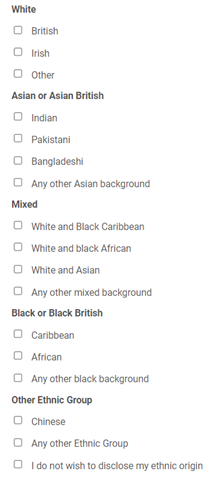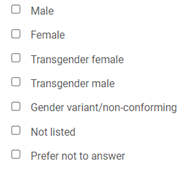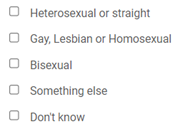Diversity and Inclusion Survey Questions for Employees

From rewards and recognition to professional development opportunities and leadership from senior managers, there are many things that can influence the employee experience, and help to make staff feel more comfortable, engaged and content in their role. However, diversity and inclusion are also a vital, but often overlooked aspect of this too.
So, what do we mean by diversity and inclusion? What difference can it make to a business? How can you measure it? And what inclusion survey questions should you be asking to help identify the improvements you need to make?
Well, that’s what we are going to look at in more detail in this blog piece.
Diversity equity and inclusion definition
To start with, what do we mean by Diversity Equity and Inclusion (DEI)?
Essentially, DEI is about recognising and embracing the differences that exist within any given setting. Then providing the necessary support, so everyone feels included and able to thrive personally and professionally within that environment.
To get a better understanding of this, it can be helpful to break DEI down into its component parts.
Diversity
This component focuses on the differences that exist within any given setting. In the workplace, that can mean differences in race, ethnicity, gender, gender identity, sexual orientation, age and socioeconomic class.
Equity
This element is all about ensuring processes and programs are impartial, fair and provide equal possible outcomes for every individual.
Inclusion
The final bit of DEI is focused on ensuring people feel a sense of belonging in the workplace. What we mean by this is that every employee should feel comfortable and supported by their organisation in being their authentic selves.
It’s important to note that with diversity alone, the job is only half done. You need to follow the final inclusion and equity parts in order to complete it. Through inclusion you’ll ensure everybody feels welcomed, appreciated and involved in the workplace. While equity ensures that the right support is provided for advancement, so inclusion can be nurtured for success.
How to measure diversity and inclusion
So, having considered the business case to improve workplace diversity and inclusion, you’ll want to see how you compare with other companies.
Workforce surveys are a great place to start in helping you to see what you’re already doing or not doing and highlighting any areas where you most need to improve.
They can also help organisations who are at different stages of their diversity and inclusion journey, such as the following.
Those who are just beginning to put a program together and need to account for the diversity that exists already. For this group, a survey will help them to benchmark the current status of diversity within their organisation. This will then allow them to know how well they’re progressing, as they work to improve diversity and inclusion.
For those looking to shake up their DEI program, surveys can help them better understand current opinions of it from different employees. This could also include measuring current levels of engagement.
Finally, for those who are merely looking to run an existing program, the quality of the existing measurement tool will be crucial, as it regularly informs company policies and initiatives to uphold the standards of the program. So, once again a quality employee survey can help this process.
It’s also worth noting the value of gaining opinion from people before they join your organisation or during their early stages of employment. You can do this through recruitment questionnaires and when you’re onboarding employees.
Diversity survey questions for employees
When it comes to obtaining this opinion through your survey, your diversity and inclusion survey questions will be vital in helping you to evaluate your organisation’s culture and identify any key areas of improvement you need to address. So, it can be really helpful to have some sample diversity and inclusion survey questions to draw on for inspiration.
However, before you do anything else you must consider the audience sample for your survey. Ensuring you have sufficient demographic representation is important for any survey, but critical when you’re sending out diversity survey questions for employees.
Essentially, demographics refers to the factors we use including age categories, race and sex to differentiate different groups within a population.
Demographics is extremely valuable in surveys. It allows us to segment a market into smaller categories based on these factors, then compare and evaluate how responses might vary according to a range of different demographic criteria and whether this could be influencing a respondent’s answer.
When it comes to questions on diversity and inclusion, you’ll want to ensure you’re encouraging participation from diverse groups in your organisation. Only then are you likely to get the most accurate picture of how you’re performing on DEI and what you need to improve it.
So, here’s some sample questions to help you to initially capture the diversity of your workforce. This also includes some inclusive gender options for surveys.
Race/ethnicity question
What racial/ethnic group do you belong to? Select the option that best describes you:

Gender question
How do you describe your gender identity? Select the category that you most identify with:

Sexual orientation question
How do you like to describe your sexual identity or sexual orientation? Select all that apply:

Disability status question
Do you identify as a person with a disability or are you a person with accessibility needs? If yes, would you be happy to tell us a bit more about this?
While all the demographic questions that you ask are important, it’s vital to pay special attention to disability status. The reason for this is that it can influence survey completion. You should always make alternative forms of completion accessible to anyone unable to take your survey online or on paper.
Race, gender identity, sexual orientation and disability status questions are a great way to open your survey, before you explore wider DEI questions. But these are by no means an exhaustive set of demographic questions.
Diversity and inclusion survey questions for employees
Having asked your demographic questions, you’re now ready to explore what staff think about your efforts in the wider area of diversity and inclusion.
Some questions you might like to consider for this include:
“Considering that employees’ feelings about diversity, inclusion and equity inside the workplace can have an impact on their engagement and organisational performance.
On a scale from 1 to 5, where is 1 is Strongly Disagree and 5 is Strongly Agree. How would you rate these following statements?
Statement. I would recommend this organisation as a great place to work.
Statement. My employer always inspires me to give my very best at work.
Statement. A year from now I still expect to be working for this organisation.
Continuing with this 5-point rating scale question, which is ideal for measuring sentiment, you could explore diversity, inclusion and equity separately to get a better idea of your overall progress in this area.
Suitable questions could include:
Diversity
On a scale from 1 to 5, where is 1 is Strongly Disagree and 5 is Strongly Agree. To what extent would you agree with the following statement:
Statement. Our organisation really values diversity.
Statement. Our leaders understand how crucial diversity is to our future success.
Statement. We invest a lot of time and energy into building diverse teams.
Inclusion
On a scale from 1 to 5, where is 1 is Strongly Disagree and 5 is Strongly Agree. How would you rate the following statements:
Statement. I feel my uniqueness of my background and identity are valued at “include name of your organisation”.
Statement. I have a real sense of belonging working at “include name of your organization”.
Statement. I feel I’m respected by my colleagues.
Equity
On a scale from 1 to 5, where is 1 is Strongly Disagree and 5 is Strongly Agree. To what extent would you agree with the following statement:
Statement. Our process for career advancement/promotion is transparent for all employees.
Statement. Our organisation gives people from all backgrounds equitable opportunities to advance their careers.
Statement. I feel supported in my career growth at this company.
Questions exploring diversity, equity and inclusion are must-haves when putting together diversity and inclusion survey questions for employees. However, there are also some more specialised areas you might want to address such as racial justice and harassment and discrimination.
It’s also important to include room in your survey for open-ended feedback. The reason for this is that you can capture richer details, feelings and notions when the audience is given a chance to express themselves. It also gives them the opportunity to cover an aspect of their work experience that was perhaps missed with closed questions.
A good example of this can be seen with the following question:
“What are we doing well if anything in terms of building a more diverse, equitable and inclusive organisation? Please write your thoughts in the text box below.
The growing importance of diversity and inclusion to employees
The feedback from your survey questions, can help you to make the improvements you need to make your staff feel more comfortable, engaged and content in their role. The benefits of this should be felt company wide, through increased productivity and reduced churn.
But it’s not just the benefits to your existing staff. You’re also likely to be more attractive to new recruits and attract the best talent, as working for an organisation that’s values diversity and inclusion is becoming increasingly important to people looking for new jobs. And when you’ve got the best talent and they’re fully engaged and committed, you’re likely to be more successful as a result.
So, given that this is a win-win situation for all those involved, it makes sense to make your organisation as diverse and inclusive as you can.


